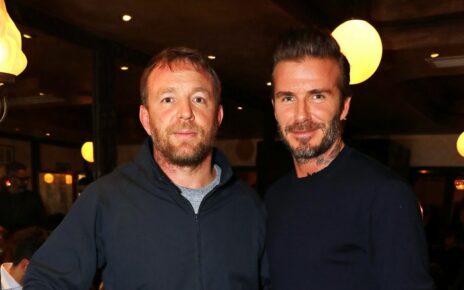Woodstock ‘99 was one of the great symbolic events of the end of the 20th century, occurring about two years before the violent randomness of the 21st smashed into view. Intended to capture the idyllic spirit in which the original Woodstock festival, which happened in 1969, lives in memory, the 1999 edition was instead marred by violent riots. It was a crystal-clear announcement that whatever hippie spirit still existed in mainstream American life had been choked off at the source.
That’s an interesting story worth telling — indeed, HBO’s “Music Box” series of documentaries, produced by Bill Simmons, did an excellent job last year of placing the story within the cultural context of a dead-end nihilistic youth culture and a late-‘90s rock scene dominated by male rage. Netflix’s new documentary series “Trainwreck: Woodstock ‘99” expends plenty of energy on depicting what happened; indeed, its three installments track the festival’s three nights. But there’s too little emphasis or even curiosity pointed toward the why and how of the disaster, making this ultimately a somewhat shallow dip into deep waters.
To the series’ credit, director Jamie Crawford has assembled a fairly extensive set of participants in the action — including recording artists, attendees, and organizers — to comment in retrospect, and some of their insights are indeed revealing. Korn lead singer Jonathan Davis, whose raucous performance on the festival’s first night set a tone of ominous, free-floating anger that defined the weekend, is unambiguously proud of his performance, while Gavin Rossdale, whose band Bush followed Korn, recalls the night as “a potential runaway train.” The ways that musical acts raise or lower the temperature on audience behavior is elegantly drawn here, and feels urgent in an era when, in reaction to the 2021 crowd-surge deaths at a Travis Scott concert, other artists are taking greater care than ever.
But the plain facts of what happened cry out for more context. The plain facts of high temperatures, inadequate water, and a too-martial-by-half set of booked artists begin to paint a picture of why there was discontent. But the 2017 Fyre Festival (itself the subject of multiple documentaries) was a comparable misfire at which violence did not break out. This series has several opportunities to illustrate the culture in which Woodstock ‘99 seemed like a good idea, and the reality in which it plainly was not, starting with repeated mentions of the 1999 Columbine High School shooting, which Woodstock organizers saw as a potential impetus to bring youth culture together. Opportunities to dig into what political goals were intended, rather than the nuts and bolts of what happened, pass by, un-elaborated upon. The idea of sexual assault at the festival is broached very, very late in the series, as if to avoid casting a deeper pall, or trying not to have to reckon with the subject throughout the work as a whole.
This unadorned approach seems clearly a choice, and those seeking a high volume of information, well-curated, about a series of events that seems both utterly predictable in retrospect and hard to believe will be rewarded. (It’s worth noting that the archival footage is carefully pulled together, and made me badly miss the era in which MTV was, among other things, a news operation, not just a rerun channel with a couple of annual awards shows.) But the place Woodstock occupied, and the one Woodstock ‘99 now occupies, in the public imagination would seem to demand more than restatement, however elegant. This is a song many will have heard before, and without a fresh take, it just feels like a cover.
“Trainwreck: Woodstock ’99” debuts on Netflix on Wednesday, August 3.
Read More About:
Source: Read Full Article
